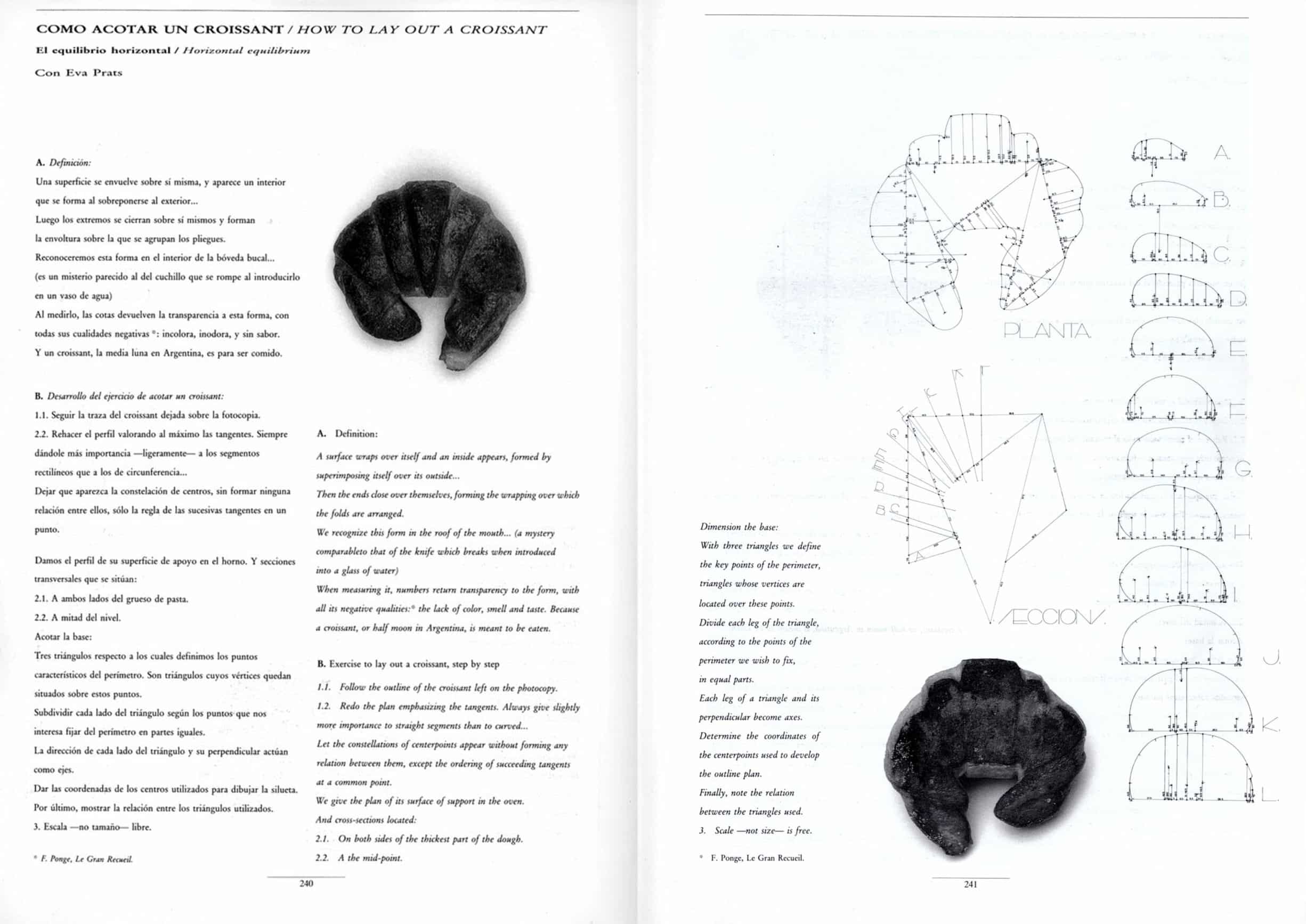Writing Prize 2020: To Measure a Croissant
‘Through modesty, restraint, and measured discipline, immeasurable delights are made possible.’
James Corner, Taking Measures Across the American Landscape (1996)

C. To measure a croissant, we might:
1.1 Evaluate all ingredients involved: flour, sugar, milk, yeast, salt and butter.
1.2 Count the number of folds the butter and dough must endure to grow into a croissant that feels infinitely layered upon first bite (typically 12 layers, 4 sets of 3; resulting in 81 layers of butter and 82 of dough).
1.3 Multiply 1.2 with the number of times each triangular portion of buttery dough is rolled over itself to confirm the maximum number of layers in each mouthful.
1.4 Count the number of croissants baked at one time to gauge one batch.
1.5 Grade the curve of a croissants shell to survey the oven in which it is baked.
1.6 Calculate the embodied energy of the ingredients and processes involved to derive the impact of a croissant sale.
1.7 Consider the above and measure the time it takes to sell all units to estimate croissant economy.
1.8 List the possible additions that may be added (jam, honey, cheese, ham, more butter) to proportion how the taste or texture of a croissant may be altered, improved or spoilt.
1.9 Compare how hungry we were before the croissant with how satisfied we feel after eating it to dimension the temperance of our appetite.
1.10 Analyse the types of places a croissant can be bought to determine where a croissant might be found.
2. Compare all of the above with your next croissant to begin to formalise croissant standards.
For Miralles, the familiarity and form of the croissant collapsed architectural drawing. The exercise How to Lay out a Croissant was not about a croissant at all. It was about surveying, precision and convention, as well as the limits of such measures. It was about retooling an everyday object to establish the process of architectural drawing. In a similar vein, an everyday object might be used to draw up on the many – and perhaps endless – ways we measure.
Emily Priest is a practicing architectural designer, educator and writer based in London.
This text was a prize winner in the short form category (≤ 350 words) of the Drawing Matter Writing Prize 2020.
